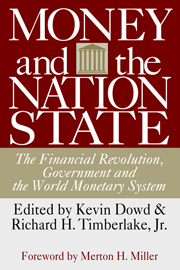The housing market is always tied up with Federal Reserve policy and the course of the money supply. To understand the linkage between changes in the money supply and the housing market, one must understand the transmission mechanism.
The transmission mechanism of monetary policy is a process by which a sustained change in monetary aggregates leads to changes in asset prices, economic activity, and inflation. For example, when there has been a significant, sustained increase in the money supply, broadly measured, asset prices will typically increase within one to nine months, economic activity will increase within six to 18 months, and the price level will rise within twelve to 24 months.
This mechanism, which is based on the quantity theory of money, was evident after the monetary injections coincident with the onset of the Covid-19 pandemic. These injections began in February 2020 and would later tally up to a 41 percent increase in the money supply, measured by M2, by March 2022. In the nine months following February 2020, asset prices surged—the S&P 500 rallied by 67.9 percent from its March 2020 low. Housing prices, another major asset class, rose 8.9 percent in the nine months following February 2020. The transmission mechanism held for economic activity, too. Unemployment fell by 3.2 percentage points between September 2020 and September 2021, and the annualized GDP growth rate reached 7 percent in the fourth quarter of 2021. Finally, we experienced rapidly accelerating inflation in the twelve to 24 months following the initial monetary surge: The inflation rate reached a 40-year high of 9.1 percent per year in July 2022.
The transmission mechanism works on the way down the same way as it works on the way up. Just as excessive increases in the broad money supply cause asset prices, economic activity, and the price level to increase, excessive decreases cause the opposite.
Unfortunately for Americans, the Federal Reserve has, through its mismanagement of the money supply, whipsawed them. First, it goosed the money supply, and now, under its quantitative tightening regime, it has allowed the money supply, measured by M2, to contract by a cumulative 1.5 percent since March. There has not been a contraction like this one since World War II. Before World War II, the only notable sustained contractions of the money supply occurred in 1929–1932 and 1937. And as any student of history knows, those money-supply contractions were followed by the Great Depression and the Recession of 1937–1938.
Let’s take a look at how the housing market has reacted to the Fed’s whipsawing of the money supply. The numbers are startling. According to the St. Louis Fed, the average home price in the U.S. increased from $374,500 in 2020 Q2 to $525,000 in 2022 Q2—a 40 percent increase. Contrary to Fed Chairman Jerome Powell’s assertions, this increase did not represent a housing “bubble.” It was precisely what anyone with knowledge of the quantity theory of money would have predicted.
Now, let’s take a look at the effects of the Fed’s quantitative tightening. In 2020, during the Fed’s ultra-loose monetary phase, the average 30-year conforming mortgage rate was 3.11 percent. For an average home price of $374,000 with 20 percent down, the mortgage size was $299,200. That resulted in a monthly payment of $1,599. In November, under the Fed’s quantitative-tightening regime, the average 30-year conforming mortgage rate reached 7.2 percent. For an average home price of $525,000 with 20 percent down, the mortgage size would be $420,000, amounting to a monthly payment of $2,851. In short, the average mortgage payment on the average priced home increased by a stunning 78 percent in just two years.
It should be no surprise that housing starts are down 21 percent from their peak in April 2022. In that same vein, existing-home sales have dropped for nine months straight. We know, given the Fed’s excessive tightening and current contraction of the money supply, that a recession is probably already baked in the cake and will appear in 2023. Indeed, that’s exactly what the housing market—one of the best early warning signs of an impending slump—is telling us.










